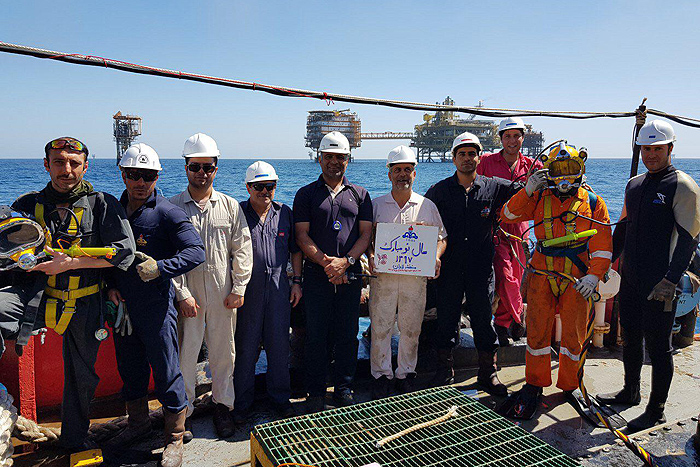It is located in Hormuzgan Province and more specifically 144 kilometers south of Lavan Island.
Due to the existence of about 70% of oil and gas layers of this oilfield in Iran’s territorial waters and its shared status, its development has always been a priority for Iran’s petroleum industry. In the 2000s the platforms of this field that had been damaged during the 1980-1988 Iraqi war were renovated.
A couple of years ago in Tehran, the Iran Offshore Oil Company (IOOC) nominated Salman along with the Norooz, Dorood, Foroozan and Soroosh as candidates for development under the newly developed contractual framework known as the Iran Petroleum Contract (IPC).
In compliance with the Ministry of Petroleum’s policy of prioritizing development of jointly owned fields, Salman is the most important of the five fields for development.
Given the history of oil production in the Salman field, it seems that the main objective of Iran’s petroleum industry in such ageing fields as Salman has been to apply cutting edge technology for maximum efficient recovery and enhancing the rate of recovery from these fields.
Despite the high recovery rate in the Salman field, some layers of this field have yet to be depleted. Therefore, it is possible to increase output from this mature brownfield.
Salman contains light crude oil with API gravity varying between 33 and 37. Renewed development of the Salman field allows for increased output. If enhanced oil recovery (EOR) methods are applied, a much higher output is envisioned.
The Salman field incorporates an asymmetric anticline measuring 14 kilometers long and 11 kilometers wide. Geologically, it is composed of three oil production layers dating from the Jurassic and Cretaceous eras.
The Salman field also incorporates a gas layer.
The field was discovered in the 1960s by Lavan Petroleum Company. The first exploration well in this field was drilled in 1956 to allow for production three years later.
According to the latest data, the Salman field has 44 oil and 10 gas wells. Based on studies currently under way, gas production from Salman could rise after making some arrangements.
The field is owned 67% by Iran and 33% by the UAE. There is not precise figure about gas production from Salman whose rate of recovery stands at 51%.
The oil extracted from the Salman field is carried to Lavan Island via a subsea pipeline of 22 inches in diameter for final processing on onshore facilities and then exported or stored to feed the Lavan refining facility.
Despite being ageing, Salman still has an acceptable level of deposits. A timely development of this field would boost its output. Five platforms are currently operating in this field.
Among the three reservoirs in Salman, the one located at a depth of 10,000 meters under seabed accounts for 70% of the Salman output. A layer located at a depth of 8,000 feet accounts for 20% of the Salman output and a third layer at a depth of 5,000 feet for 10%.
Salman is estimated to contain 4.5 billion barrels of oil in place. Since 1999 onwards, when a number of oil and gas fields were developed under buyback deals, studies on the Salman field were carried out under the supervision of Petroiran Development Company (PEDCO) and the Petroleum Engineering and Development Company (PEDEC).
The primary processing of crude oil is one on platform before being carried in a 144-kilometer-long pipe for secondary processing, storage and exports to Lavan.
Gas produced from the nine wells in this field is carried to Siri Island via a 36-inch pipe.
Courtesy of Iran Petroleum


Your Comment